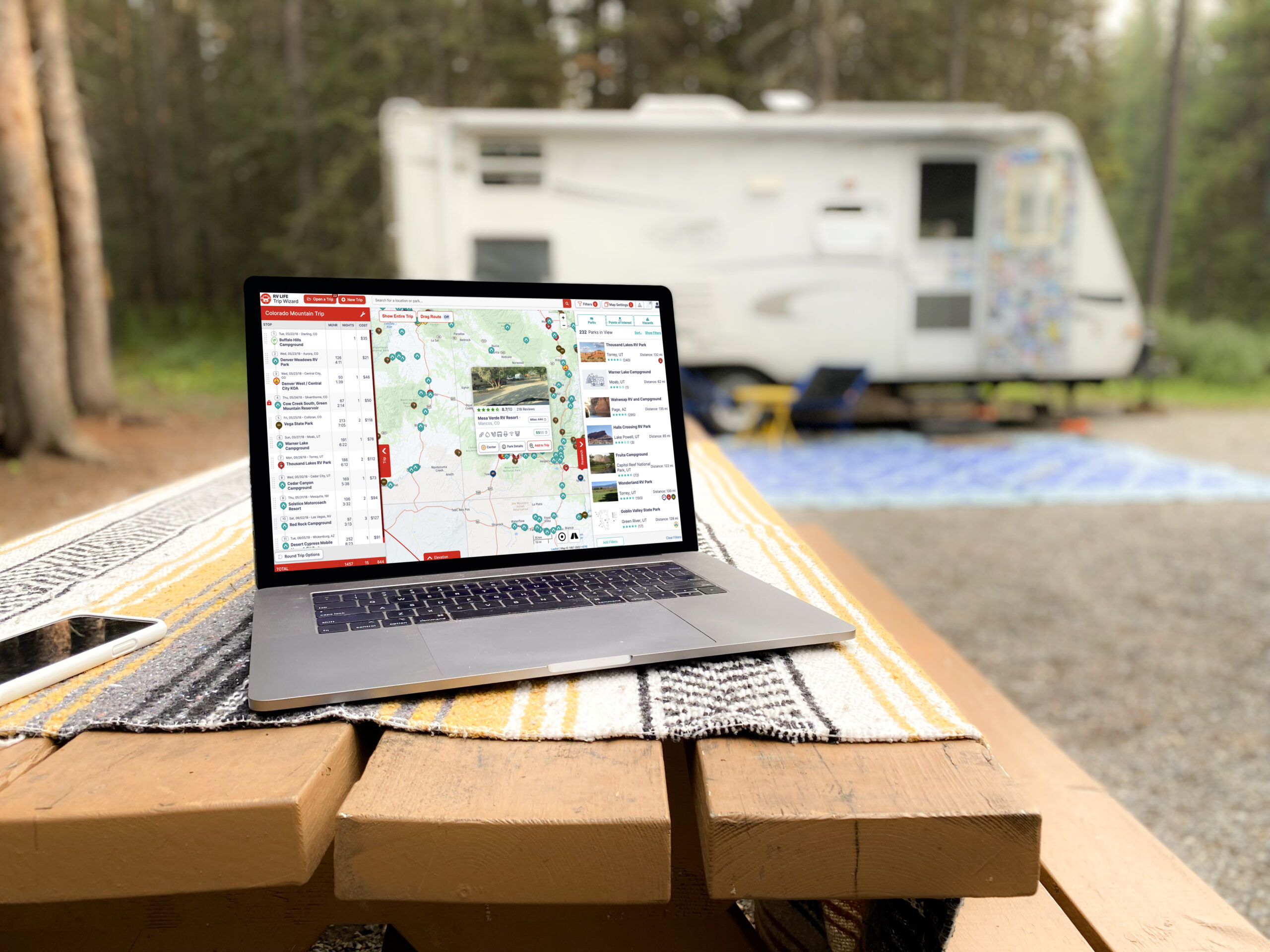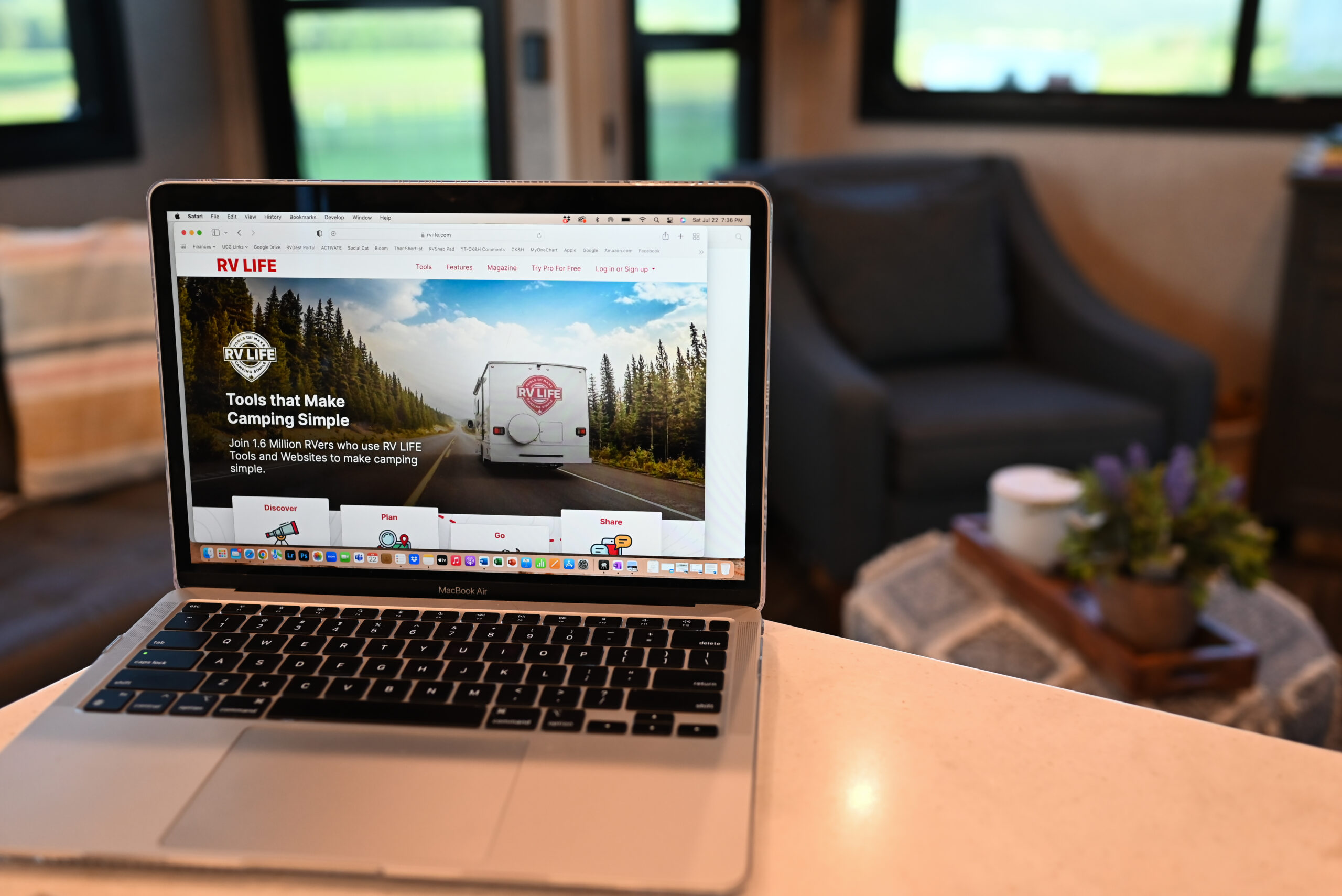
RV WiFi: Everything You Need To Know
In this day and age, more and more people are looking to be connected to the internet wherever they roam. For many people this even includes camping trips, leading them to search for a way to have an RV WiFi connection.
Sure, some do still enjoy disconnecting for the weekend and heading out into nature without any electronics whatsoever, but for others, this simply isn’t possible. Perhaps they are some of the million Americans who live in RVs full-time and need to work from their rig, or maybe they can only leave work for a vacation if they can still be contacted reliably. Of course, some people just want to have the ability to stream the occasional show or send an email even when out in the wilderness.
Fortunately, there are ways to get internet while camping in an RV. Not only that, but you have options for how to go about it. In this article, we’ll discuss those options so you can hit the road with the RV WiFi connection you’ve always dreamed about.

Internet options for RVers
First, let’s discuss the various options for RV WiFi. You might choose to pick only one of three options, but many people opt to use a combination of two or even all three of them. Obviously, what you choose will depend on your needs and budget.
Surrounding Wi-Fi Connections
The first (and usually the cheapest) option is to connect to the Wi-Fi offered by stores, restaurants, and the parks you stay in.
This option works really well if you do a lot of stealth camping near shops. It can also be an okay option if you always stay in RV parks with internet connection. However, you should be aware that many campground connections are less-than-stellar, so if being connected is important—especially if you need a fast connection—this may not be the route to take.
Mobile hotspot
Most full-time RVers—and many part timers as well—choose to stay connected using a cellular hotspot. A hotspot device connects using the same cell towers your phone uses, offering a fairly reliable connection at a relatively affordable rate. Additionally, hotspots are easy to access and use.
The biggest issue with this type of connection is the fact that most cell plans are capped, and even those that claim to be unlimited will likely be throttled after so much usage each month. Additionally, there is no one cell provider that will keep you connected in all areas of the country.
Fortunately, there are ways around these problems, which we will discuss further below.
Satellite internet
Finally, there is the option of satellite internet. This is the most expensive RV WiFi internet option at the moment, and the connection offered by a satellite tends to be quite slow. On top of that, a satellite setup is big, bulky, and complicated, and you won’t be able to connect if the sky is overly cloudy or a shade tree is in the way.
All that said, there is one major bonus that only satellite internet offers: connection everywhere. Therefore, if you plan to do a lot of boondocking in the middle of nowhere, where cell service doesn’t exist, satellite internet might just be your best bet For RV WiFi.
Choosing a cell carrier
If you’re like the vast majority of RVers out there, a cellular hotspot is what you’ll choose for your RV WIFi connection. In this case, the next question is which carrier to pick. There are quite a few options on the market these days, and narrowing them down can seem overwhelming.
We recommend doing the following before making a final decision.
Know what’s out there
First, you will want to do a bit of research so you know what all is out there. Keep in mind that some options may not be listed or immediately obvious on a carrier’s site.
Additionally, there are some obscure carriers out there that might offer an option that works better than what the well-known companies are offering.
Consider your needs
After you know what is available to you, you can narrow those options down by considering your needs:
- Do you need hundreds of gigs of data each month, or will 30 GB be sufficient?
- Are you working with a tight budget?
- Do you need the absolute fastest connection possible?
Recognizing these needs and using them to select the best option for you is the way to go.
Know where you’re going
You’ll also want to consider where you’ll be traveling. Verizon offers the best coverage in some areas of the country, but in other areas, AT&T is best. Meanwhile, those who will be in cities for the most part might prefer T-Mobile or US Cellular.
Knowing what works where is important when choosing cell service for your RV. An easy way to tell what RV parks have cellular service is to check them over on RV LIFE Campgrounds.
Double up on mobile plans
If you travel far and wide and really need to be connected at all times, you might consider investing in more than one plan.
For instance, some RVers have T-Mobile coverage on their phones and both an AT&T and Verizon hotspot. This ensures they will have RV WiFi access almost anywhere with any kind of cell service whatsoever.

Improving your RV WiFi connection
No matter which type of internet you choose, there will be times when you’ll want to improve the connection. Below are our top tips for improving your RV WiFi.
Park wisely
Where you park really does matter. If you plan to use in-park Wi-Fi, park near the router if possible. Want good cell service or satellite? Avoid parking in canyons. Some people will even drive all round a park before choosing a spot in order to pick the one with the best cell service.
Use a Wi-Fi Extender
An RV WiFi extender can work wonders when it comes to improving the quality of Wi-Fi coming in from an outside source. We especially like the ALFA Network Wi-Fi CampPro 2v2Range Extender Kit for this purpose.
See also: Boost Your RV’s Weak Internet Signal With The WiFiRanger
Install a cellular antenna
Though not always as useful as a cell booster, a cellular antenna can also help improve your existing cell connection. Because an antenna is almost always the cheaper option, most people opt to try this first before investing in an expensive booster. Proxicast makes a good cellular antenna that we highly recommend.
Invest in a cell booster
Another option for those using cell signal is a cell signal booster. A booster can take an incredibly weak signal and boost it so it is reasonably useful. Our favorite cell booster for RVers is the WeBoost Drive 4G X RV.
To learn more about the WeBoost installation, check out our previous article here.



